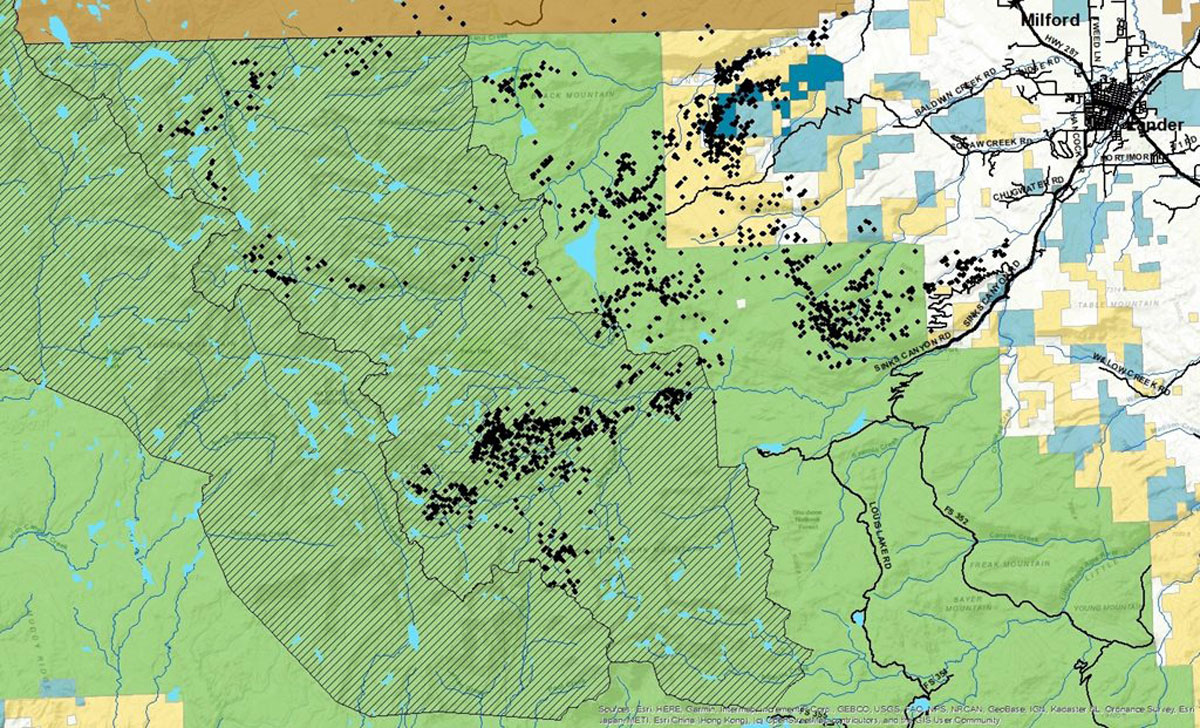Figure above shows locations of collared elk (black dots) from mid-June through Mid-August, 2019. Below is a news release issued by the Wyoming Game and Fish Department.
For the last two winters the Wyoming Game and Fish Department collared elk near Lander in the Squaw Creek/Sinks Canyon area and the North Fork Popo Agie area. In addition elk have been collared by USFWS and Shoshone & Arapahoe Fish and Game in areas on the Wind River Reservation (WRR) between the North Fork Popo Agie River and Ft. Washakie.
Biologists tracked elk patterns this spring and summer. In April and May, they watched as elk near the Lander foothills moved back and forth between the edge of town after snowstorms and back up to foothills and higher elevations as the snow melted once again. Most elk made their final move up to the foothills in May after Memorial Day, but even then, some hung lower, likely giving birth to calves.
Even into the summer this year, a few elk in the Squaw Creek and North Fork areas remained at low elevations into July. However, all collared elk and most of the rest of the herd moved up to higher elevations by about June 1. The elk from Squaw Creek/ Sinks Canyon have spent the summer in the Middle Fork Popo Agie Drainage, including two collared cows that have stayed above treeline in the alpine tundra. Elk collared between the North Fork Popo Agie and Baldwin Creek Canyon have summered near Mexican Creek, Cyclone Pass, and Shoshone Lake. In addition, elk from the WRR have moved to Dickenson Park, North Fork Popo Agie and South Fork of the Little Wind areas.
Elk movements will continue to be monitored in these areas throughout the upcoming fall and winter. Game and Fish hopes to hold an informational meeting mid-winter with a more complete review of movement patterns and management strategies.
(Graphic source: Wyoming Game and Fish Department)
